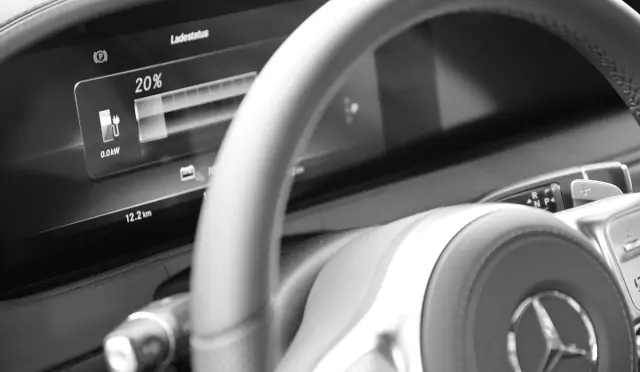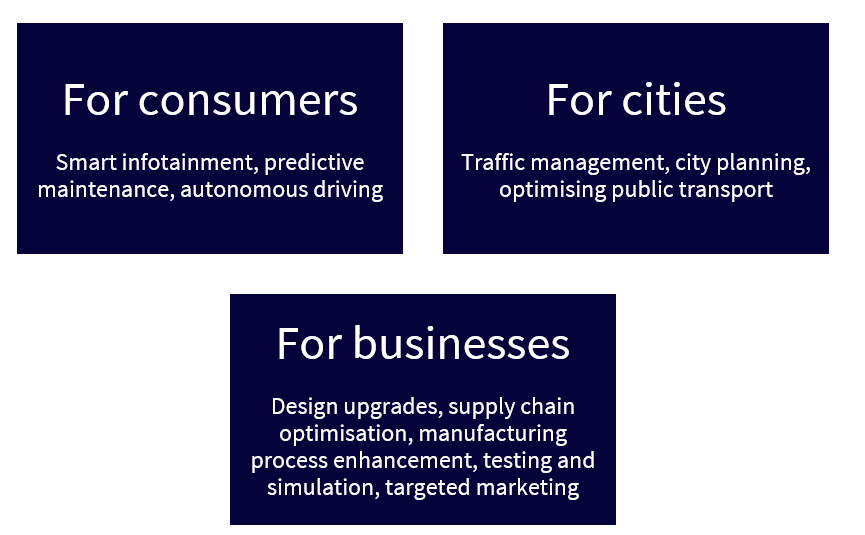AI is fuelling an iPhone moment for automobiles. Here’s how

By Mobeen Tahir, Director, Macroeconomic Research & Tactical Solutions, WisdomTree
Before the iPhone was invented, the function of a mobile phone was limited to making and receiving calls, sending text messages, setting an alarm, and playing snake. The iPhone was not just a cool new gadget, it created an entire new ecosystem of applications for both existing and new businesses. With a few taps on the screen almost anything you desire can show up on your doorstep.
At WisdomTree, we believe the advent of artificial intelligence (AI) is potentially as groundbreaking, if not more so, than the internet revolution. The founder of the internet made the statement about its potential, above, almost three decades after its invention. Today, the AI revolution is only just getting started and automobiles could be one of the gadgets that drive it into the next phase.
The automotive AI journey has only just begun
At the CTA’s 2024 Consumer Electronics Show (CES), cars garnered a lot of attention. The prevailing sense among participants was that the automotive AI journey has only just begun. Major automobile manufacturers like Mercedes-Benz, BMW, and Volkswagen unveiled generative AI-powered virtual assistants. This takes existing infotainment systems designed to handle relatively straightforward commands to a level where not only is the functionality more sophisticated, but the user experience is much more personalised.
Almost all modern cars being rolled out now have internet connectivity and large screens. This paves the way for an entirely new ecosystem of applications for people on the go. A car that knows its passengers, can offer personalised recommendations on which routes to take, where to stop for a meal, and how to be entertained during the journey.
And that’s just the beginning. A smarter infotainment system is also good for safety as it can offer predictive maintenance advice. For managers of fleets of vehicles, cars connected to a central dashboard can significantly simplify their job.
Then there is autonomous driving. The common joke is that autonomous driving is always two years away. But that is only true if you define autonomous driving as fully autonomous under all conditions – technically referred to as level five autonomous driving. But progress along the journey cannot be disregarded. According to Waymo, an autonomous ride-hailing company in the US, their cars have driven over 10 million miles without a human driver and billions more in simulation. The company has announced that its service will be available to the public in four major US cities later this year.
AI has multiple use cases across the automotive sector
Source: WisdomTree, master of code, BCG, McKinsey, 2024.
The opportunity for automotive businesses
Cars don’t just transport people from point A to B; they also embody people’s stylistic sensibilities – which is why design matters – and AI can play a crucial role. For example, the Toyota Research Institute has developed a new AI technique that can reduce the number of alterations needed to accommodate engineering necessities, like optimising the vehicle’s aerodynamics, in an original design. The original design itself can find a lot of inspiration from text-to-image generative AI tools.
AI can help optimise the supply chain by tracking materials, components, and finished products reducing delays in manufacturing. This can streamline operations and reduce inventory costs. On the production line itself, AI tools can help create better quality control. For example, Audi states that its production staff previously used ultrasound technology to check 5,000 spot welds per vehicle. In contrast, AI can now analyse 1.5 million spot welds on 300 vehicles in a single shift – freeing up the workers to focus on anomalies.
Smarter cities, powered by Artificial Intelligence
AI has many use cases in smart cities as well. AI can help develop intelligent public transport routes that adapt based on patterns of demand. AI can better manage traffic by optimising signal timings and rerouting traffic. AI can help drivers find parking spaces based on real-time data saving precious time and easing congestion. AI can identify the best spots for building charging infrastructure. And AI can event help in last-mile distribution by optimising routes.
An exciting future awaits
Just like the internet-powered iPhone forced the world to rethink connectivity, AI-powered cars are pushing the world to rethink mobility. And just like the former created immeasurable opportunities for enterprise, so will the latter.




